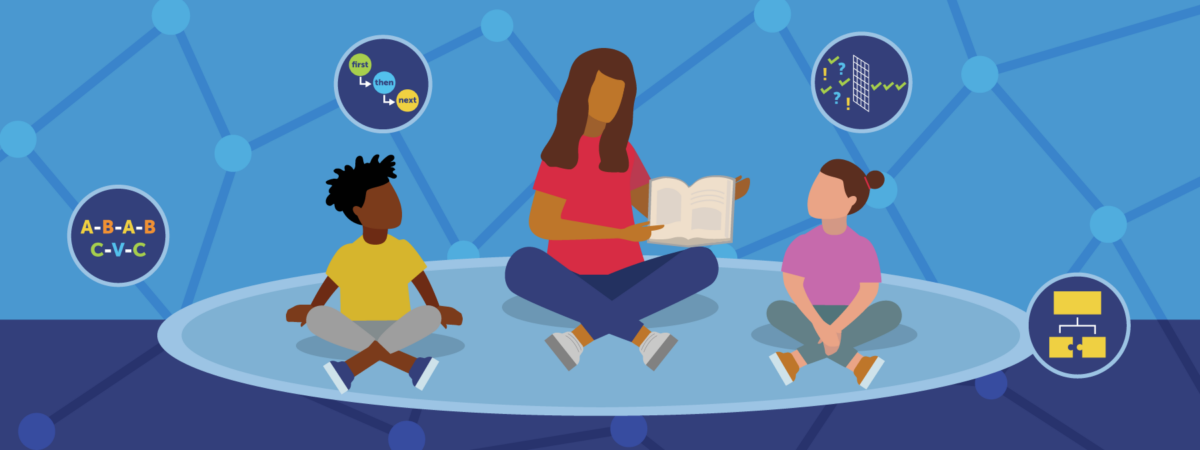
In this project, we developed computational thinking routines that enhance learners’ engagement in essential English Language arts (ELA) practices. While CT is based on concepts fundamental to computer science, its application goes beyond just “plugged” coding on digital devices. The problem-solving approaches that underpin CT provide a foundational toolbox for learners to systematically solve problems, whether using a computer or not. These skills better enable learners to engage in fundamental skill-building across various subject areas. English Language arts provides particularly rich learning opportunities for CT integration, such as synthesizing text and decomposing words, as described below.
Each routine is accompanied by learner-facing Anchor Charts and complementary Lesson Plans that illustrate how to teach the routine while incorporating inclusive pedagogies.
Our toolbox includes the following routines:
| Lesson Plan | Anchor Chart | CT Skill | Description |
|---|---|---|---|
|
Decomposition |
Students break down a challenging problem while reading to support decoding, fluency, and comprehension. |
||
|
Pattern Recognition & Abstraction |
Students build ideas through concrete steps: 1) Brainstorm, 2) Organize, 3) Abstract, 4) Transform. |
||
|
Pattern Recognition |
Students identify and express noticeable patterns in texts to build understanding of text structures and to support comprehension. |
||
|
Abstraction |
Students synthesize texts to grow their thinking by starting with background knowledge, abstracting new ideas from reading, and then forming connections between ideas. |
||
|
Algorithmic Thinking |
Students engage with the logic of a sequence by writing a story, narrative, or process as a flowchart. |
| Lesson Plan | |
|---|---|
| Anchor Chart | |
| CT Skill |
Decomposition |
| Description |
Students break down a challenging problem while reading to support decoding, fluency, and comprehension. |
| Lesson Plan | |
| Anchor Chart | |
| CT Skill |
Pattern Recognition & Abstraction |
| Description |
Students build ideas through concrete steps: 1) Brainstorm, 2) Organize, 3) Abstract, 4) Transform. |
| Lesson Plan | |
| Anchor Chart | |
| CT Skill |
Pattern Recognition |
| Description |
Students identify and express noticeable patterns in texts to build understanding of text structures and to support comprehension. |
| Lesson Plan | |
| Anchor Chart | |
| CT Skill |
Abstraction |
| Description |
Students synthesize texts to grow their thinking by starting with background knowledge, abstracting new ideas from reading, and then forming connections between ideas. |
| Lesson Plan | |
| Anchor Chart | |
| CT Skill |
Algorithmic Thinking |
| Description |
Students engage with the logic of a sequence by writing a story, narrative, or process as a flowchart. |
The routines above are illustrative examples of how computational thinking can be integrated in ways that enhance subject-area learning. To support this integration, we’ve updated our Lesson Library for Integrated Computational Thinking with new resources and examples of CT integration across various subjects for Prek-12. This library provides educators with practical lessons, curriculum units, and other materials for incorporating CT into their daily teaching practices.
Sign up for our newsletter or follow Digital Promise on Twitter, Facebook, LinkedIn to stay updated on our Computational Thinking initiative.